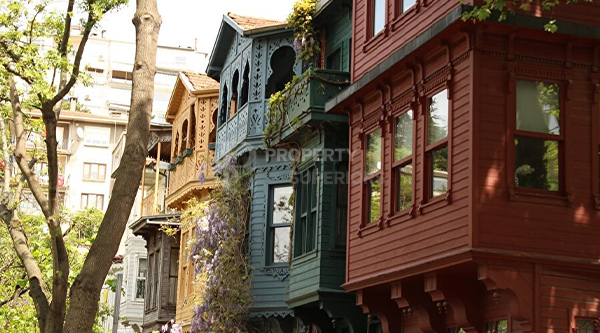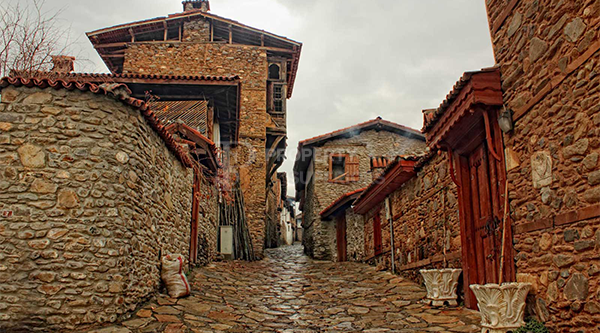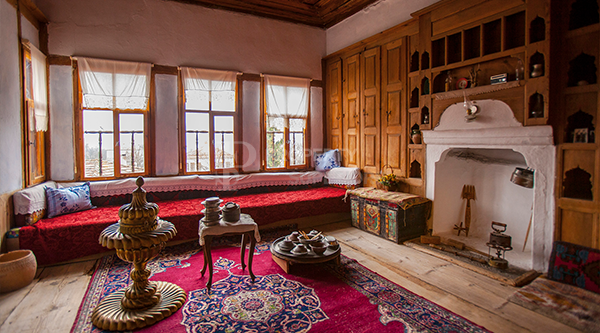
Old Turkish homes occupy a prestigious place in the nation's history books because to their incredibly distinctive architectural designs. Whether or whether you consider yourself an expert in architecture, they are worth examining because they offer enduring tales of cultural trends, local lives, and climatic circumstances.
Old Turkish homes were built with practicality and economy in mind, with the exception of luxury homes, which are unusual in Turkey's history. Being frivolous while building or extending the structures was a risky endeavor because mortgages didn't exist and many generations sometimes resided in the same home, prompting a demand for seclusion.
Homes in various regions of Turkey, particularly in the east, reflected the ancient nomadic way of life of the Turks. While in large cities like Istanbul, a lack of space resulted in crowded living conditions, Gecekondu bolgesis frequently arose fast during periods of mass migration.
Even though there are still a handful in larger cities, shanty villages and dwellings constructed without authorization often have a limited lifespan, especially now that Turkey is working to revitalize the housing market.
A stroll down memory lane to view the older architecture of previous generations pays respect to bygone times as Turkey's youngest and brightest architects are rethinking the structural design of new, and modern Turkish homes.

Where to Find Historic Turkish Homes
Yali Bosphorus Mansions
Istanbul's yali mansions, which line both sides of the Bosphorus, are without a doubt the most expensive real estate market in Turkey. The Ottoman rulers and their entourage utilized them as summer residences and locations to court foreign aristocracy; they were mostly constructed in the 19th century. There are several older homes for sale in Istanbul along the Bosphorus beach.
Low windows with unparalleled views of the Bosphorus, spacious rooms with high ceilings, and planted gardens are just a few of the special characteristics. The oldest Yali home is Amcazade Huseyin Pasha, erected in 1699, while Erbilginler, sold for 100 million euros in 2015, is the most costly. A Bosphorus tour is the best way to view them all, even if some are accessible to the public as wedding sites or museums.
Eastern Black Sea
Building animal quarters under the bedroom to allow heat to ascend was one strategy used in regions with heavy snowfall, such as the Kackar Northeast, to keep homes warm. Further up the slopes, roving wild animals were also a problem, so inhabitants built their homes on platforms for security using wood from surrounding woods.
A distinctive building style of brick on the bottom and crisscross wood and stone styles on the upper half depict the typical tea plantation architecture styles of Turkey as you move slightly west to the tea producing regions of Trabzon and Rize.
Cappadocian Cave Houses
The cave homes in Cappadocia are as eccentric as it gets, yet they aren't a gimmick. Locals have built their dwellings out of the soft tufa rock that was once the landscape but has since been softened by volcanic eruptions.
Early Christians cut out the cave churches of Goreme, which are now a UNESCO World Heritage site, due to the rock's resilience. Hundreds of subterranean cities with peculiar but adequate living conditions are now accessible to the public.
It will take time to find a cave house in Cappadocia, so if you choose to stay in one of the numerous real cave hotels spread around the area, plan on waiting.

Ottoman residences at Safranbolu and Beypazari
Safranbolu's Ottoman homes were included to the UNESCO World Heritage Site list mainly for their distinctive architectural design. The internal living quarters of two-story residences with wood on top and stone on the bottom were enlarged by extending balconies.
A lot of renovated hotels still have their original features. In addition, the Kaymakamlar Evi museum displays rural Ottoman life during the time. Near the Turkish capital of Ankara, at Beypazari and Amasya, you may discover more examples of Ottoman architecture.
Traditional Greek Stone Cottages
Along the Aegean and Mediterranean shores, substantial Greek populations constructed old stone homes throughout Turkish history. Low ceilings with solid wood beams, indoor courtyards, and paint in white and blue are common features in various locations, such as Alacati.
Sadly, many of these houses deteriorated, and several were demolished. There has been a new desire to update and renovate them, but the expense of doing so, as well as making the building compliant with contemporary construction codes, frequently exceeds thousands of pounds.
Due of the limited demand for these cottages and the large amount of money invested, they are more difficult to sell. Therefore, anyone considering renovating an ancient Turkish home should do it more for fun than for financial gain.
Related posts:
The Turkish official gazette published on Tuesday, December 12, a Republican decision issued by the presidency of the Republic of Turkey and Turkish President "Recep Tayyip Erdogan" and bearing the number 32397 regarding making some amendments to the conditions for...
The first day of last September witnessed the implementation of a new law imposing financial fines on real estate owners who impose exorbitant rents on tenants in Turkey, as disputes in recent years between landlords and tenants of real estate...




 New provisions for obtaining Turkish citizenship through real estate ownership
New provisions for obtaining Turkish citizenship through real estate ownership
 Turkish Real Estate Rental Law 2024
Turkish Real Estate Rental Law 2024
 Ways to obtain Turkish citizenship through investment 2024
Ways to obtain Turkish citizenship through investment 2024
 How to choose an ideal apartment in Turkiye?
How to choose an ideal apartment in Turkiye?
 Turkish passport... Extraction method and fees 2024
Turkish passport... Extraction method and fees 2024
